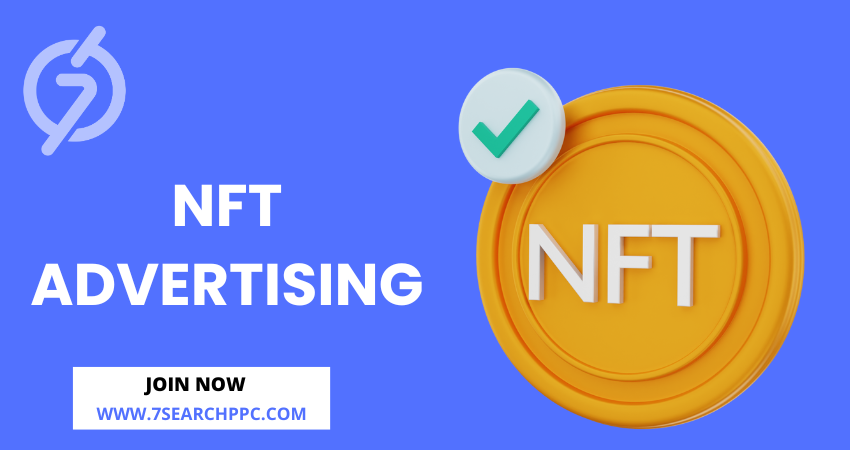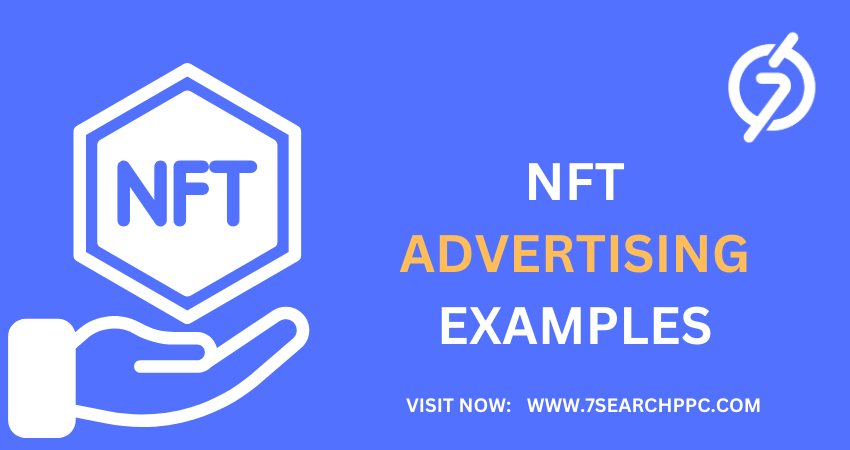In recent years, NFTs (Non-Fungible Tokens) have transformed the digital world, providing creators, artists, and brands with a new way to monetize their work. As the NFT space grows, so does the need for innovative marketing strategies. Advertising in this realm demands creativity, blending traditional techniques with the blockchain’s unique characteristics. This blog will delve into NFT advertising examples that have successfully captured audience attention and driven engagement.
What is NFT Advertising?
Before we dive into examples, it’s essential to understand what NFT advertising entails. NFT advertising involves promoting non-fungible tokens through various marketing strategies such as digital ads, social media campaigns, influencer partnerships, and creative visual storytelling. These ads can target collectors, investors, and art enthusiasts who are active in the NFT space. The innovative nature of NFTs allows for greater creativity and interactivity in advertisements, often tying in with blockchain technology and cryptocurrency.
NBA Top Shot: Turning Highlights into Collectibles
How NBA Top Shot Revolutionized NFT Ads
NBA Top Shot, a platform that allows users to buy, sell, and trade officially licensed NBA highlight clips as NFTs, is one of the most prominent NFT advertising examples. Their marketing approach combines exclusive content with the allure of collecting iconic sports moments.
Ad Campaign Strategy
NBA Top Shot utilized both traditional sports marketing and digital ads to promote their platform. They integrated their advertising with the NBA’s existing fanbase, tapping into sports enthusiasts who wanted to own a piece of history. Their strategy also involved:
- Partnering with influencers and players to showcase the NFT collections.
- Running targeted social media ads, specifically on Instagram and Twitter, platforms where NBA fans are active.
- Offering limited-time drops to create a sense of urgency.
Impact on the NFT Space
The success of NBA Top Shot showed how NFTs could be commercialized in the mainstream, inspiring other sports leagues and entertainment industries to explore NFTs as part of their marketing strategy.

RTFKT Studios: The Future of Digital Fashion
Combining Fashion and NFTs in a Unique Ad Experience
RTFKT Studios has set the standard for digital fashion in the NFT world. Their focus on creating NFT ads examples that bridge the gap between physical and virtual fashion has attracted a younger, tech-savvy audience.
Innovative Marketing Tactics
RTFKT’s advertising campaigns often include:
- Interactive 3D models of digital sneakers and apparel.
- Collaborations with major brands like Nike to give their NFT collections mass appeal.
- Exclusive drops and limited editions that encourage urgency and collector appeal.
The Role of Augmented Reality
One of their more groundbreaking NFT ads examples involved integrating augmented reality (AR) into their NFT advertising campaigns. Consumers could “try on” digital sneakers in AR before purchasing the NFTs, giving them an interactive shopping experience.
Beeple’s Everydays: Leveraging Social Media for NFT Advertising
Beeple’s Digital Art Revolution
When digital artist Beeple (Mike Winkelmann) sold his “Everydays: The First 5000 Days” NFT for over $69 million, it marked a turning point for NFT art. Beeple’s success can be attributed not just to his unique digital creations but also to the effective use of social media to promote them.
Social Media Strategy
Beeple’s NFT advertising leveraged platforms like Instagram and Twitter to build a following and promote his work. Key elements of his advertising approach include:
- Posting daily updates and teasers to maintain interest and engagement.
- Collaborating with major NFT platforms like Christie’s for high-profile auctions.
- Using viral marketing techniques by creating shareable and provocative digital art pieces.
Why It Worked
Beeple’s success lies in how he positioned himself as a thought leader in the NFT space, utilizing NFT ads examples that encouraged discussion and sharing across social media, building anticipation for his auctions.
Cryptopunks: The Power of Exclusivity in NFT Ads
Pioneers of NFT Collectibles
Cryptopunks, a collection of 10,000 unique algorithmically generated characters, became one of the most well-known NFT collections. Their success stems from the exclusivity and rarity of the characters, a hallmark of effective NFT advertising examples.
Viral Marketing Strategy
Cryptopunks’ advertising approach involved:
- Leaning into scarcity, with limited characters available.
- Allowing early adopters to claim them for free, creating a viral buzz that attracted collectors and investors.
- Partnering with influencers and platforms to amplify their brand.
The Impact on Collectors
Cryptopunks demonstrated how creating a sense of rarity and exclusivity through advertising can drive demand. This strategy inspired many future NFT projects to limit availability to enhance value and demand.
Bored Ape Yacht Club: Building a Community Around NFTs
Turning NFTs into a Lifestyle Brand
The Bored Ape Yacht Club (BAYC) is more than just an NFT collection; it’s a community-driven lifestyle brand. BAYC’s success lies in the unique approach to NFT advertising examples, blending digital art, exclusivity, and community-building into one package.
Community-Centric Marketing
BAYC used innovative marketing tactics to turn their NFT holders into an exclusive club, offering:
- Access to private events, merchandise, and additional NFTs for holders.
- Collaborative ad campaigns with celebrities and influencers to increase visibility.
- Utilizing social media platforms, particularly Twitter, to foster a sense of community.
The Power of Celebrities
By leveraging celebrity ownership, BAYC turned their NFT ads examples into cultural phenomena. Celebrities like Snoop Dogg and Jimmy Fallon showcased their Bored Apes on social media, helping the brand gain mainstream attention.
Gucci: Integrating NFTs with Luxury Fashion
NFTs in High Fashion Advertising
Gucci, a luxury fashion brand, embraced NFTs as part of their digital marketing strategy. Their campaign combined high-fashion aesthetics with the exclusivity of NFTs, creating a new advertising standard in the luxury market.
Cross-Platform Advertising Strategy
Gucci’s NFT advertising examples stand out due to their:
- Strategic use of partnerships with NFT platforms like SuperRare and digital artists.
- Social media campaigns on Instagram and TikTok showcasing exclusive virtual clothing and accessories.
- Interactive advertising through augmented reality, allowing users to experience their NFT collections digitally before purchasing.
A New Age of Luxury Advertising
Gucci’s foray into NFTs signifies how traditional luxury brands can adapt to the digital age by incorporating NFTs into their advertising campaigns, using exclusivity and creativity to attract both new and established customers.
Gary Vee’s VeeFriends: Building Personal Brands with NFTs
NFTs as a Tool for Personal Branding
Entrepreneur and social media personality Gary Vaynerchuk (Gary Vee) launched VeeFriends, a collection of NFTs that grants access to his exclusive events, community, and content. VeeFriends is a perfect NFT advertising example of how personal brands can capitalize on NFTs.
Personal Branding Strategy
Gary Vee used his already-established brand to promote VeeFriends by:
- Offering exclusive perks, like access to VeeCon (a conference for VeeFriends holders), through NFT ownership.
- Promoting the collection across his social media platforms, targeting his massive follower base.
- Utilizing community engagement through Discord and other platforms to build a loyal group of NFT collectors.
Long-Term Vision
Gary Vee’s NFT project emphasizes the importance of personal connection in advertising. His ads didn’t just sell NFTs; they sold access to experiences, events, and his personal mentorship.
How These Examples Shape the Future of NFT Advertising
Key Takeaways from NFT Advertising Examples
The seven NFT advertising examples above highlight a few critical lessons:
Exclusivity and Scarcity: Brands like Cryptopunks and BAYC capitalized on rarity and exclusivity to drive demand, creating viral advertising campaigns.
Interactivity and Innovation: RTFKT and Gucci’s use of augmented reality in their ads shows how digital experiences can be integrated into NFT advertising.
Community Building: Gary Vee and BAYC have demonstrated the value of building a loyal community around an NFT project, using their advertising to foster engagement and long-term growth.
The Future of NFT Ads Examples
As the NFT space continues to evolve, so will the advertising strategies that brands use to promote their collections. Innovations in virtual reality, augmented reality, and cross-platform integrations will likely lead to even more immersive NFT ads examples that inspire future marketers.
Final Thoughts
NFT advertising is all about blending creativity with technology. By examining these successful NFT ads examples, marketers can gain insights into how to craft campaigns that resonate with the audience, drive engagement, and build lasting connections with the digital community.
Frequently Asked Questions (FAQs)
What is NFT advertising?
Ans: NFT advertising refers to the promotion of non-fungible tokens (NFTs) through various marketing strategies, such as digital ads, social media campaigns, influencer partnerships, and interactive platforms. These advertisements aim to target collectors, investors, and art enthusiasts in the NFT space.
How do NFT ads differ from traditional digital ads?
Ans: NFT ads often emphasize the uniqueness, rarity, and exclusivity of a digital asset. They leverage the blockchain’s transparency to show ownership and authenticity. Unlike traditional ads, NFT ads can also offer interactive elements like augmented reality (AR), virtual events, and exclusive access.
Can traditional brands use NFT advertising?
Ans: Yes, many traditional brands, such as Gucci and Nike, have already entered the NFT space. These brands use NFTs to create exclusive digital assets, limited-edition drops, or new interactive experiences, which are advertised to target younger, tech-savvy audiences.
How do NFTs provide value to brands?
Ans: NFTs offer value by creating new revenue streams, enhancing customer engagement, and providing opportunities for exclusive access and community building. They also allow brands to experiment with innovative technologies like AR and VR to create unique customer experiences.
